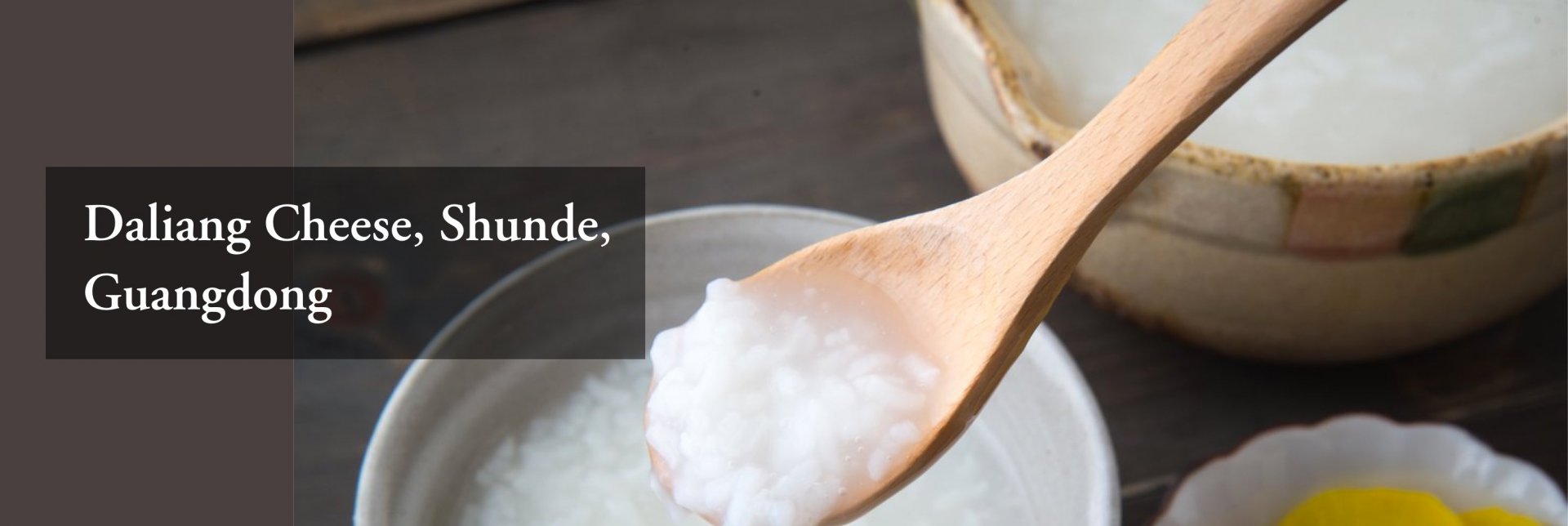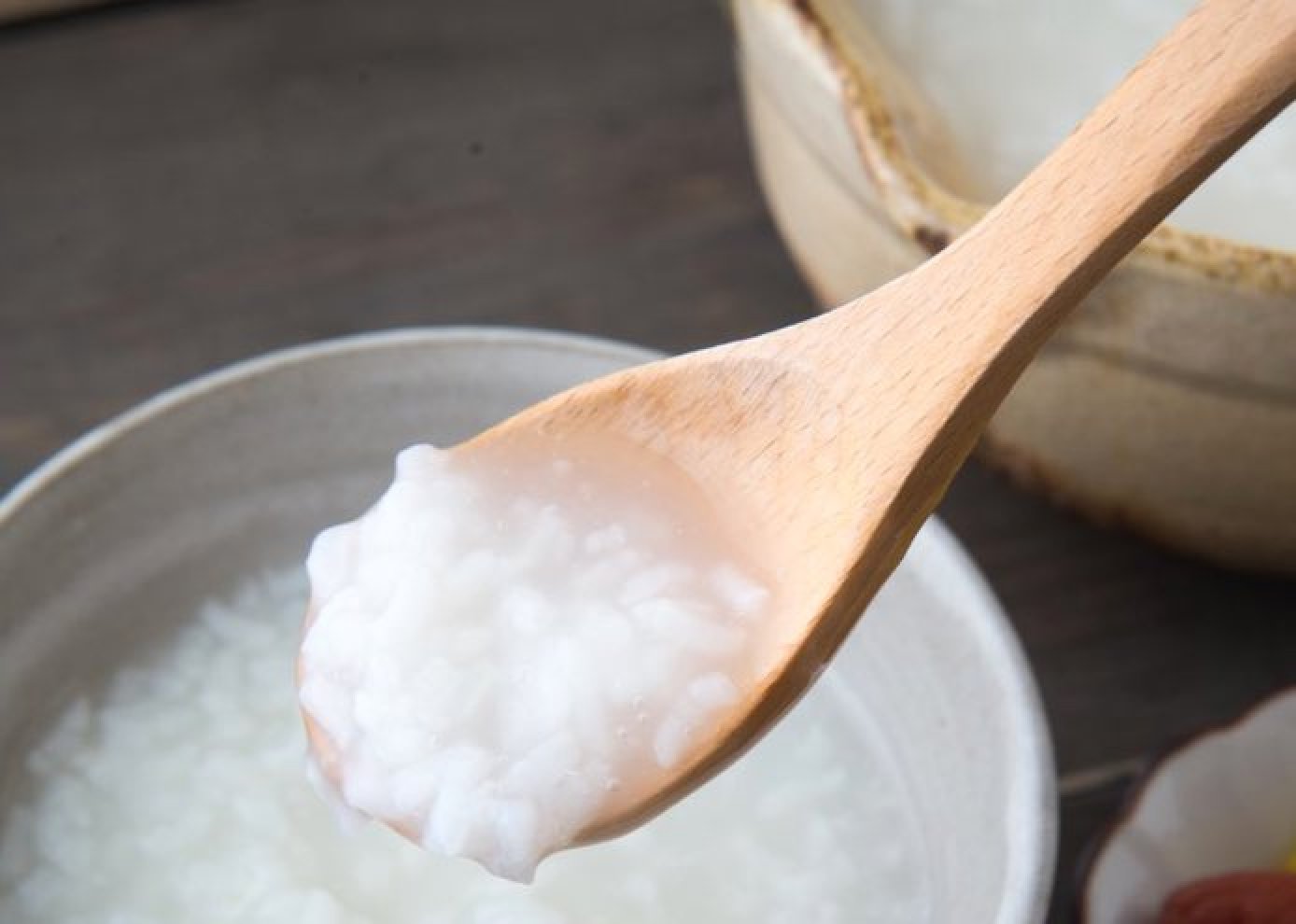Daliang Cheese, Shunde, Guangdong
When I first stepped into the village of Jinbang in Daliang, Shunde, I was fascinated by the smell of buffalo cheese. The unique aroma, the flaky texture, and the sight of those snowy-white, round-shaped cheese, with the four characters “Jinbang niuru” (金榜牛乳, literally “cow milk”) - are still deep in my mind. These thin pieces of cheese were usually stored in a glass bottle filled with salt water. When added to plain congee, this indigenous water buffalo cheese gives the congee a rich and creamy texture and special flavor. It was also believed that cheese from Daliang was especially nutritious for young children and the elderly.
Milk has been widely studied anthropologically and historically in western societies. Milk has been widely studied anthropologically and historically in western societies.
Milk has been widely studied anthropologically and historically in western societies. The late anthropologist Marvin Harris divided people by their milk consumption habits into “lactophobes” and “lactophiles”. He argued that the Chinese do not drink milk because they cannot tolerate milk biologically. Contrary to this argument.
Water buffalo cheese and milk products have been part of the food system of Guangdong for centuries. Jinbang niuru, for example, is believed to have been consumed since the Ming Dynasty.1
The water buffalo cheese of Shunde is made from swamp buffalo milk, an the other subspecies of the domesticated water buffalo (Bubalus bubalis).
In Daliang, artisanal cheese makers are women who traditionally passed down the craft from mother to daughter. They produce niuru mostly in small workshops. The milk is collected in a porcelain cup around 3.5 cm in diameter, then mix with a small amount of white vinegar and warmed in a ceramic pot 20–30 cm in diameter. The artisan stirs the milk mixture in a clockwise direction with the index and middle finger till a milk curd forms, which is then placed into a wooden mold embossed with the words “Jinbang niuru”. After the artisan squeezes out the extra water using her left palm, a piece of white and semi-transparent cheese about 5 cm in diameter remains and is taken out from the mold and placed in salt water in a porcelain container.
Although the consumption of water buffalo cheese in Daliang can be traced back five generations, the origin of the cheese is still shrouded in myth. A popular story told of how a brave Jinbang villager saved the life of an Italian Catholic missionary, who then settled in the village and later taught the villagers to add vinegar to make cheese as a way of preserving buffalo milk.
Cheese made from different kinds of milk was believed to have different medicinal properties. For example, cheese made from water buffalo milk was “cooling” and suitable for “hot” body types, while cheese from yak milk was “warming” and suitable for “cool” body types. In pre-modern Shunde, water buffalo cheese used to be consumed as a kind of medicine for nourishing and “cooling” the “hot” body, and was also regarded as a bupin (tonic) consumed by wealthy people. This practice continues today, whereby water buffalo cheese is added to drinking water to cure and “cool” sore throats, or added to plain rice congee to produce a highly nutritious and easily absorbable food for the elderly, babies, and young children.
The meaning and usage of Chinese cheese has changed over time. Nowadays, Jinbang niuru is not only a medicinal food, but is presented as a form of cultural heritage to boost tourism. The Shunde government, together with chef’s associations, food historians, and entrepreneurs, has designated a number of indigenous milk products as “renowned Chinese snacks” (Zhonghua mingxiaochi). The Jinbang cheese, double-boiled milk pudding (shuangpi’nai), and milk pudding with ginger juice have been promoted as cultural heritage through state-sponsored mass media and marketing materials. They have been marketed through TV and radio programs, gastronomic tourism maps (“In Search of Taste in Daliang”), the internet (“Chu chu Fengcheng” – Chefs from the City of Fengcheng) and brochures. In 2014, Shunde was appointed a UNESCO Creative City of Gastronomy and in 2018, Jinbang milk cheese was listed as Shunde’s intangible cultural heritage.
Reference
Book
1. 蘇禹着:《碧江講古》(廣州:花城出版社,2005年)。
2. Harris, Marvin, Good to Ear: Riddles of Food and Culture (London: Allen and Unwin, 1986)
3. Li Shizhen 李時珍 (1518-1593), Compendium of Materia Medica: Bencao Gangmu 本草綱目, trans. Luo Xiwen 羅希文 (1945-2012) (Beijing: Foreign Languages Press, 2003)
4. Wiley, Amdrea S., Cultures of Milk: the biology and meaning of dairy products in the United States and India (Massachusettes: Havard University Press, 2014)
Article
1. Mak Sau-wa, Veronica 麥秀華, “The Revival of Traditional Water Buffalo Cheese Consumption: Class, Heritage, and Modernity in Contemporary China”, Food and Foodways, Vol. 22, No. 4 (2014): 322-347.
All articles/videos are prohibited from reproducing without the permission of the copyright holder.




Welcome to leave a message:
Please Sign In/Sign Up as a member and leave a message好久沒再吃大良牛乳!
多謝麥博士的文章,下次到順德大良,一定再點大良雙皮奶!
☺️☺️
#1
Chi Seng Pun
06-02-2023 16:07:56